Sarah Sundin's Blog, page 451
November 29, 2012
Today in World War II History
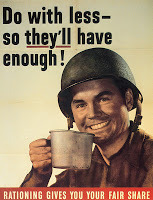 70 Years Ago—Nov. 29, 1942: Coffee rationing begins in the United States. See blog article: "Coffee Rationing in World War II."
70 Years Ago—Nov. 29, 1942: Coffee rationing begins in the United States. See blog article: "Coffee Rationing in World War II."
Published on November 29, 2012 03:00
November 28, 2012
The Advent Wreath - Messiah Is Coming!
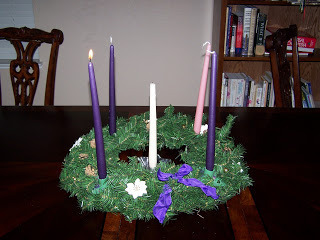 One of my family's favorite Christmas traditions is the Advent wreath. On each of the four Sundays in Advent (the four weeks before Christmas), our family gathers around the wreath with cookies and eggnog and hot chocolate. We light the candles, read Scripture passages, and sing carols. Not only is this cozy family time, but it focuses us with joyful anticipation on the birth of Jesus.
One of my family's favorite Christmas traditions is the Advent wreath. On each of the four Sundays in Advent (the four weeks before Christmas), our family gathers around the wreath with cookies and eggnog and hot chocolate. We light the candles, read Scripture passages, and sing carols. Not only is this cozy family time, but it focuses us with joyful anticipation on the birth of Jesus.The Advent wreath became popular in Germany and Scandinavia, and worked its way to Britain and America. Traditionally it's a flat evergreen wreath with four candles - three purple and one pink, or four red candles - with a white candle in the middle. Even the least crafty person in the world (that would be me) can put one together.
Each Sunday one more candle is lit, going in a clockwise pattern - purple (Prophet's Candle), purple (Bethlehem Candle), pink (Shepherd's Candle), purple (Angels' Candle). On Christmas Day, all four candles in the wreath are lit, plus the white Christ Candle in the center. This symbolizes the coming light of Jesus Christ, the Light of the World. This Sunday (December 2), is the first Sunday in Advent. If you'd like to join the Sundin family in this tradition, here are some family friendly, kid-tested ideas.
Each element can be adapted to the ages of any children present - and personalized for your family.
Advent Week One - the Prophet's Candle.
Candles:
Light one purple candle, the Prophet's Candle. Traditionally the youngest child lights the candles, but use your judgment.
Story:
(Adapt to the ages of your children) The Old Testament prophets told of a coming Messiah, or Savior - hundreds of years before Jesus was born. He would come into the dark world and bring light. Explain how prophets spoke God's word to people. Ponder what the world must have been like without the hope of Christ.
Scriptures:
Isaiah 11:1-10 (explains how the Messiah would come from David's line)
Isaiah 7:14 (Messiah to be born of a virgin)
Luke 1: 26-38 (the angel Gabriel appears to Mary)
Matthew 1: 18-24 (the angel appears to Joseph)
Songs:
"O Come, O Come, Emmanuel"
"Come, Thou Long Expected Jesus"
Does your family or church use an Advent wreath, and does it help you get in the true Christmas spirit?
Published on November 28, 2012 04:00
Today in World War II History
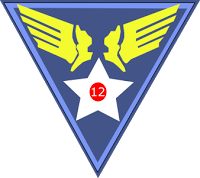 70 Years Ago—Nov. 28, 1942: US Twelfth Air Force based in Algeria flies first medium bomber mission, as B-26s attack Sfax, Tunisia. In Boston, a fire at the Cocoanut Grove nightclub kills 492. Movie premiere of George Washington Slept Here, starring Jack Benny and Ann Sheridan.
70 Years Ago—Nov. 28, 1942: US Twelfth Air Force based in Algeria flies first medium bomber mission, as B-26s attack Sfax, Tunisia. In Boston, a fire at the Cocoanut Grove nightclub kills 492. Movie premiere of George Washington Slept Here, starring Jack Benny and Ann Sheridan.
Published on November 28, 2012 03:00
November 27, 2012
Today in World War II History
70 Years Ago—Nov. 27, 1942: Germans take Toulon, France. French scuttle fleet in Toulon to avoid falling into German hands (77 ships, 16 subs).
Published on November 27, 2012 03:00
November 26, 2012
Make It Do - Coffee Rationing in World War II
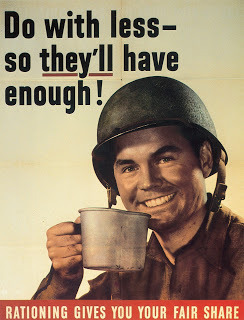 Seventy years ago this week, coffee rationing began in the United States. Although not necessary for survival—though that's debatable—coffee has been a staple in the American diet since the Boston Tea Party, and coffee rationing was extremely unpopular.
Seventy years ago this week, coffee rationing began in the United States. Although not necessary for survival—though that's debatable—coffee has been a staple in the American diet since the Boston Tea Party, and coffee rationing was extremely unpopular.Why Coffee?
During World War II, Latin America produced bumper crops of coffee beans, and those countries were Allies or neutral. However, the demands of the military on shipping required diversion from importing coffee. To make sure men in uniform received enough, civilians had to do with less.
Ration Books
In preparation for rationing, in October 1942, sales of coffee were halted to prevent hoarding. On November 29, 1942, rationing began. Americans had received War Ration Book One in May 1942 for sugar rationing, so the Office of Price Administration merely adjusted the value of the stamps. Stamps #19-28 were each designated for one pound of coffee during a specified five-week period. When the time period expired, so did the stamp. Coffee stamps could only be redeemed for family members over the age of fifteen.

Making Do
One pound every five weeks produced less than one cup a day. While some coffee drinkers benefitted from the generosity of non-coffee drinking friends or family members, most made do with less. Reusing grounds made a watery beverage dubbed "Roosevelt coffee" in honor of the president. People found if they used less and percolated longer, they could stretch their ration further. Coffee substitutes such as chicory or Postum (wheat bran, wheat, molasses, and maltodextrin) were used grudgingly or mixed with real coffee. Another war victim was the familiar coffee can. Due to a shortage of tin, manufacturers packaged coffee in glass jars.
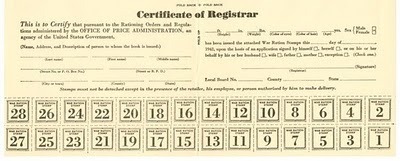
All Bad Things Come to an End
On July 28, 1943, President Roosevelt—who had patriotically switched his morning beverage from coffee to milk—announced the end of coffee rationing. Coffee was the first item to come off rationing. However, in September 1944, the Office of Price Administration raised the price of coffee to curtail demand—under the threat of a return to rationing.
What do you think? How would you get by on one cup a day?
Published on November 26, 2012 04:00
Today in World War II History
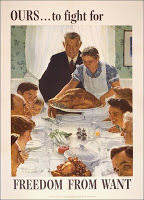 70 Years Ago—Nov. 26, 1942: First battle between US & German armor, at Coxen’s Farm near Chouïgui, Tunisia. “Battle of Brisbane”: thousands of US and Australian soldiers fight in streets, 1 killed. Casablanca, starring Humphrey Bogart and Ingrid Bergman, premieres in New York City. US celebrates Thanksgiving. Macy's Thanksgiving Day Parade is cancelled for the duration of the war to conserve rubber and helium for the war effort.
70 Years Ago—Nov. 26, 1942: First battle between US & German armor, at Coxen’s Farm near Chouïgui, Tunisia. “Battle of Brisbane”: thousands of US and Australian soldiers fight in streets, 1 killed. Casablanca, starring Humphrey Bogart and Ingrid Bergman, premieres in New York City. US celebrates Thanksgiving. Macy's Thanksgiving Day Parade is cancelled for the duration of the war to conserve rubber and helium for the war effort.
Published on November 26, 2012 03:00
November 25, 2012
Today in World War II History
70 Years Ago—Nov. 25, 1942: Luftwaffe begins air lift to German troops surrounded in Stalingrad.British make deadly failed attempt to take Medjez el Bab, Tunisia. Greek resistance groups unite in order to sabotage German railroads and bridges.
Published on November 25, 2012 03:00
November 24, 2012
Today in World War II History
70 Years Ago—Nov. 24, 1942: Hitler orders troops trapped in Stalingrad not to retreat or surrender. US renews offensive in Tunisia toward Tunis and Bizerte. News from the Polish underground of mass extermination of Jews is broadcast in the US.
Published on November 24, 2012 03:00
November 23, 2012
Today in World War II History
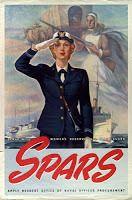 70 Years Ago—Nov. 23, 1942: Montgomery drives Rommel back to defenses at El Agheila, Libya. Dakar, Senegal comes under Allied control after French governor abandons Vichy ties. Coast Guard Women’s Reserve (SPARs: “Semper paratus—always ready”) formed.
70 Years Ago—Nov. 23, 1942: Montgomery drives Rommel back to defenses at El Agheila, Libya. Dakar, Senegal comes under Allied control after French governor abandons Vichy ties. Coast Guard Women’s Reserve (SPARs: “Semper paratus—always ready”) formed.
Published on November 23, 2012 03:00
November 22, 2012
Today in World War II History
70 Years Ago—Nov. 22, 1942: Soviets surround German Sixth Army (250,000 men) in Stalingrad. Allied and French forces sign armistice in North Africa.
Published on November 22, 2012 03:00



